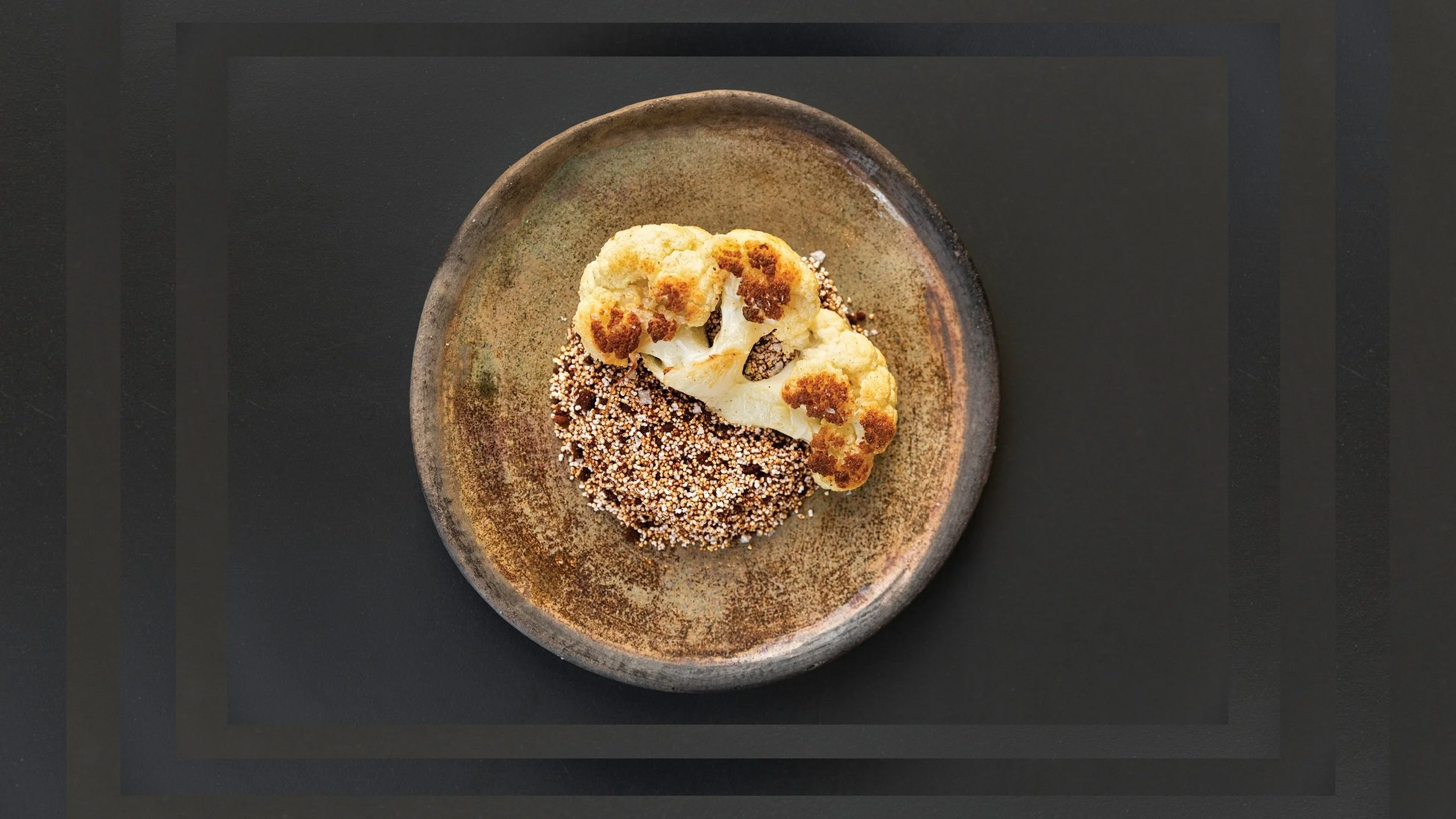The Lengua Madre Color Scale
For Chef Ana Castro, color led the way to a monochromatic mole blanco at Lengua Madre in New Orleans.
Photos: Rae Serra
Ever since she can remember, Ana Castro has been obsessed with the Pantone color scale. “I just love color. I always dress very colorfully,” says Castro. “Except for work. I always wear black for work.”
Castro’s parents are civil engineers and architects—she and her family would spend days exploring her hometown of Mexico City, admiring the brightly colored walls that lined the streets. “If I wasn’t a chef, I’d probably be an architect,” she says. “I just don’t like math that much.” Now as the executive chef of Lengua Madre, a tasting-menu-style Mexican restaurant in the Lower Garden District of New Orleans, Castro still thinks in color, from the dried red cherry mole, red beet, and pomegranate dish she ran last fall, to the more restrained cauliflower and mole blanco from last spring.
Inspired by Chef Elena Reygadas from Mexico City and Rising Stars alum Fabian von Hauske from New York City, Castro often builds a dish based on monochromatic or similar colors. “It’s a fun creative experiment,” she says. “Sometimes constraints are very good for creativity.” It all starts with one component—and for last spring’s menu, it was mole blanco. She wanted to serve it with something that matched the mole’s buttery profile, without overpowering it, and seared cauliflower came to mind. Not only would the locally-grown brassica leave room for the mole to express itself, but it also fell in line with the off-white color theme, and she could use the cauliflower scraps to thicken the mole.
Unlike a traditional mole blanco recipe, which typically includes white chocolate, milk, or chicken stock, Castro’s recipe is completely vegan. She starts with a base of sautéed onions with a little bit of habanero, before adding the cauliflower trim. “It needs a vehicle, because after that, it’s all seeds and nuts.” Very lightly toasted cashews, sesame seeds, and pine nuts are added to the pot, along with golden raisins. Once the raisins begin to get sticky, Castro pours in a touch of white wine. “Not traditional, but whatever,” she says. She adds water, reduces it down, then seasons the mix with toasted coriander seeds to open up the earthy flavors. Castro blends it all up in a Vitamix blender until the mole is soft, creamy, and uniformly beige.
Chef Ana Castro
Mole Blanco, Pan-seared Cauliflower, Brown Butter Solids, Amaranth, Habanero
She spoons the mole blanco onto a plate and tops it with a thin layer of brown butter solids and puffed amaranth, paying homage to the cultural significance of the ancient grain. “[Amaranth] is indigenous to what is now Mexico. It was used for statues and a lot of religious celebrations,” says Castro. “When we were colonized, the Spanish tried to eradicate amaranth. They were burning it all and trying to make the plant extinct.” But thankfully, amaranth prevailed. “It’s delicious,” she adds. “And when paired with the brown butter solids, it reminds me of a candy called alegría—puffed amaranth seeds and nuts.” Castro also notes that alegría means “joy” in Spanish, and that’s exactly what this dish represents. “Very much happiness and joy.”
Right in the center of the plate, is the seared, butter-basted cauliflower, that’s hit with a squeeze of lemon. “That crispy, caramelized cauliflower gets amplified by the brown butter solids,” says Castro. “Every bite is a perfect bite.” Castro instructs guests to cut through the cauliflower, opening up the pool of mole blanco. “It tastes toasty and salty like toasted cereal. The amaranth and cashews have a tiny bit of spice, but the pine nuts are dominant.” The color profile is just as balanced as the flavor. Full of exclusively whites, beiges, and browns, Castro’s dish could easily exist on the Pantone Formula Guide.









